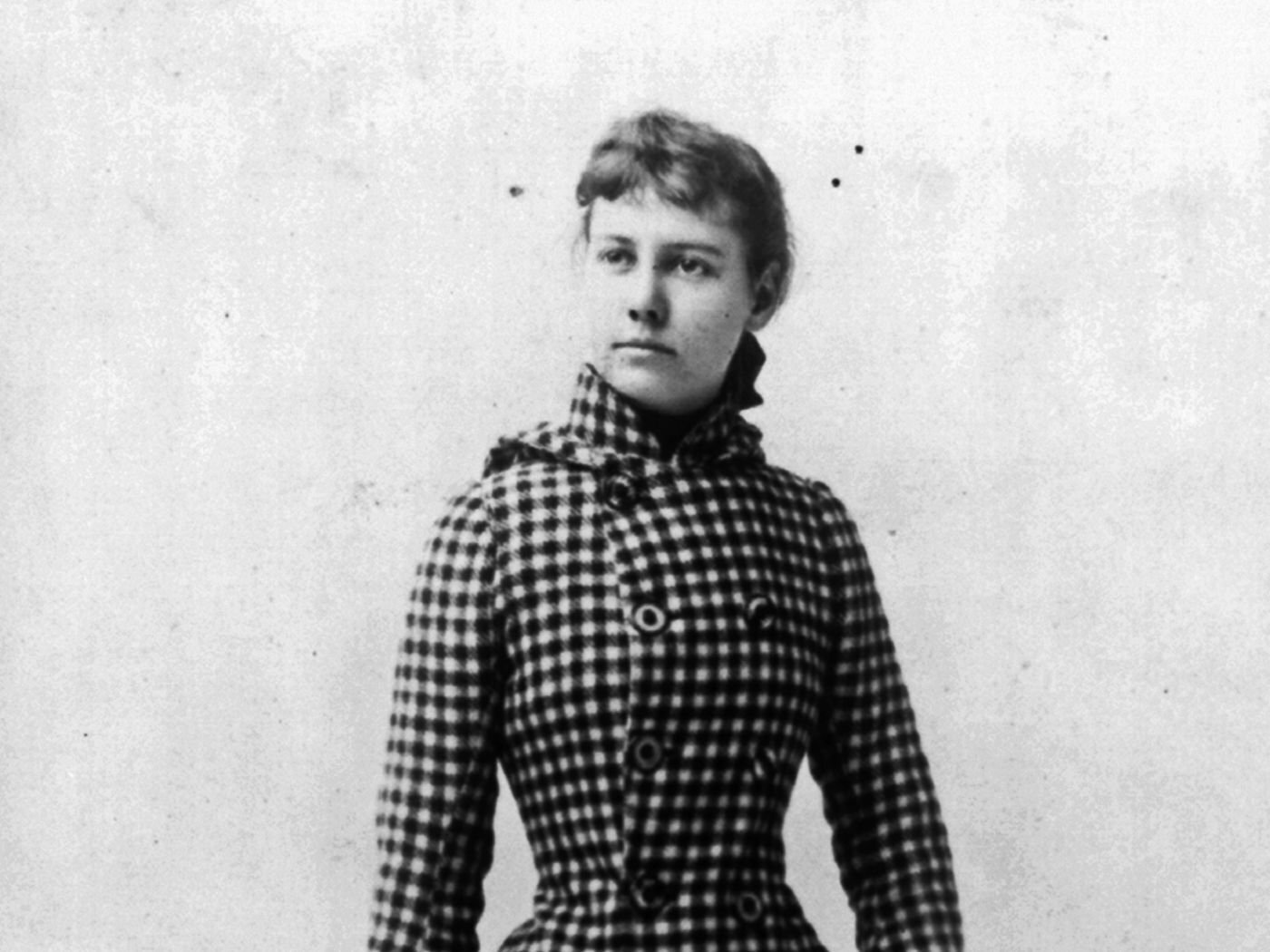
Who was Lizzie Halliday? Known as one of the most notorious female serial killers in American history, Lizzie Halliday's life is a chilling tale of crime and mystery. Born in Ireland in 1859, she moved to the United States, where her dark deeds began to unfold. Halliday's criminal activities spanned several years, involving arson, theft, and multiple murders. Her most infamous act was the brutal killing of her husband and two women in New York in 1893. Lizzie Halliday was eventually caught and sentenced to life in prison, where she continued to display erratic and violent behavior. Her story remains a grim reminder of the depths of human depravity.
Key Takeaways:
- Lizzie Halliday, a notorious 19th-century serial killer, shocked the nation with her brutal crimes and erratic behavior, challenging gender stereotypes and inspiring fascination in popular culture.
- Despite her mysterious and violent life, Lizzie Halliday's story continues to captivate people, sparking discussions about mental illness, female criminality, and the impact of true crime on society.
Who Was Lizzie Halliday?
Lizzie Halliday, born Eliza Margaret McNally, was an infamous serial killer in the late 19th century. Her life was filled with mystery, crime, and a series of bizarre events that continue to captivate historians and true crime enthusiasts.
-
Lizzie Halliday was born in Ireland in 1859 before moving to the United States with her family.
-
She was married five times, with three of her husbands dying under suspicious circumstances.
-
Lizzie was first arrested in 1879 for burning down a millinery shop in New York.
-
She was known to use multiple aliases, including Maggie Hopkins and Lizzie Brown.
-
Her most notorious crime spree occurred in 1893 when she murdered her last husband, Paul Halliday, and two women, Margaret and Sarah McQuillan.
The Murders and Arrest
Lizzie's criminal activities escalated dramatically in 1893, leading to her arrest and trial. Her actions shocked the nation and earned her a place in criminal history.
-
Lizzie Halliday was the first woman to be sentenced to death by electric chair in New York.
-
She was convicted of murdering her husband, Paul Halliday, and two women who were found buried on her property.
-
During her trial, Lizzie exhibited erratic behavior, leading many to question her sanity.
-
She was eventually declared insane and sent to the Matteawan State Hospital for the Criminally Insane.
-
Lizzie attempted to escape from the hospital multiple times but was always recaptured.
Life in the Asylum
Lizzie's time in the asylum was marked by continued violence and strange behavior. Her actions there only added to her notorious reputation.
-
In 1906, Lizzie attacked and killed a nurse named Nellie Wicks at the asylum.
-
Despite her violent tendencies, Lizzie managed to gain some privileges within the hospital due to her manipulative nature.
-
She often claimed to be a victim of conspiracies, insisting that others were trying to frame her for the murders.
-
Lizzie's case was frequently covered in newspapers, making her one of the most infamous female criminals of her time.
-
She remained in the asylum until her death in 1918.
The Legacy of Lizzie Halliday
Lizzie Halliday's story continues to intrigue and horrify people. Her life and crimes have been the subject of numerous books, articles, and documentaries.
-
Lizzie Halliday is often referred to as "The Worst Woman on Earth" due to her brutal crimes.
-
Her case was one of the first to highlight the potential for women to commit serial murders, challenging contemporary gender stereotypes.
-
Lizzie's life has inspired several fictional works, including novels and films.
-
Her story is frequently discussed in true crime forums and podcasts, keeping her legacy alive.
-
Lizzie Halliday's case remains a topic of study for criminologists and psychologists interested in the minds of female serial killers.
Unsolved Mysteries and Theories
Despite extensive research, many aspects of Lizzie Halliday's life and crimes remain shrouded in mystery. Various theories have been proposed to explain her actions and motivations.
-
Some historians believe Lizzie may have suffered from a severe mental illness, such as schizophrenia or bipolar disorder.
-
Others suggest that her violent behavior could have been a result of traumatic experiences during her childhood in Ireland.
-
There are theories that Lizzie may have had accomplices in some of her crimes, although no concrete evidence has been found.
-
Some researchers speculate that Lizzie's erratic behavior during her trial was an act to avoid the death penalty.
-
The exact number of Lizzie's victims remains unknown, with some estimates suggesting she may have killed up to ten people.
Lizzie Halliday in Popular Culture
Lizzie Halliday's story has permeated popular culture, influencing various forms of media and entertainment.
-
Her life was the basis for a 1940s radio drama that dramatized her crimes and trial.
-
Lizzie has been featured in several true crime documentaries, including episodes of popular series like "Deadly Women."
-
Her story was adapted into a stage play in the early 20th century, which toured across the United States.
-
Lizzie Halliday has been the subject of numerous books, both fictional and non-fictional, exploring her life and crimes.
-
Her case is often cited in academic studies on female criminality and mental illness.
The Psychological Profile of Lizzie Halliday
Understanding Lizzie Halliday's psychological profile can provide insights into her actions and the nature of her crimes.
-
Lizzie exhibited signs of psychopathy, including a lack of remorse and manipulative behavior.
-
Her violent outbursts and erratic behavior suggest she may have had a personality disorder.
-
Some experts believe Lizzie's actions were driven by a need for control and power over others.
-
Lizzie's ability to deceive and manipulate those around her indicates a high level of cunning and intelligence.
-
Her case has been used as a reference in the study of female serial killers and their psychological profiles.
The Impact on Society
Lizzie Halliday's crimes had a significant impact on society, influencing public perception of female criminals and the criminal justice system.
-
Her case led to increased awareness of the potential for women to commit violent crimes.
-
Lizzie's trial and subsequent media coverage challenged traditional gender roles and stereotypes.
-
The public's fascination with her case highlighted the growing interest in true crime stories during the late 19th and early 20th centuries.
-
Lizzie's story has been used to advocate for better mental health care and understanding of mental illness in the criminal justice system.
-
Her case remains a cautionary tale about the dangers of underestimating the capacity for violence in individuals, regardless of gender.
Lizzie Halliday's Legacy
Lizzie Halliday's story remains one of the most chilling in criminal history. Her actions shocked the nation, leaving a trail of mystery and horror. Known as one of the first female serial killers in the United States, her crimes were brutal and baffling. Halliday's life, marked by violence and instability, ended in an asylum, where she spent her final days. Her legacy serves as a grim reminder of the darker side of human nature. Understanding her story helps us grasp the complexities of criminal behavior and the importance of mental health awareness. Lizzie Halliday's tale, though disturbing, continues to captivate those interested in true crime and history. Her name, forever etched in infamy, reminds us of the need for vigilance and compassion in addressing mental health issues.
Frequently Asked Questions
Was this page helpful?
Our commitment to delivering trustworthy and engaging content is at the heart of what we do. Each fact on our site is contributed by real users like you, bringing a wealth of diverse insights and information. To ensure the highest standards of accuracy and reliability, our dedicated editors meticulously review each submission. This process guarantees that the facts we share are not only fascinating but also credible. Trust in our commitment to quality and authenticity as you explore and learn with us.


